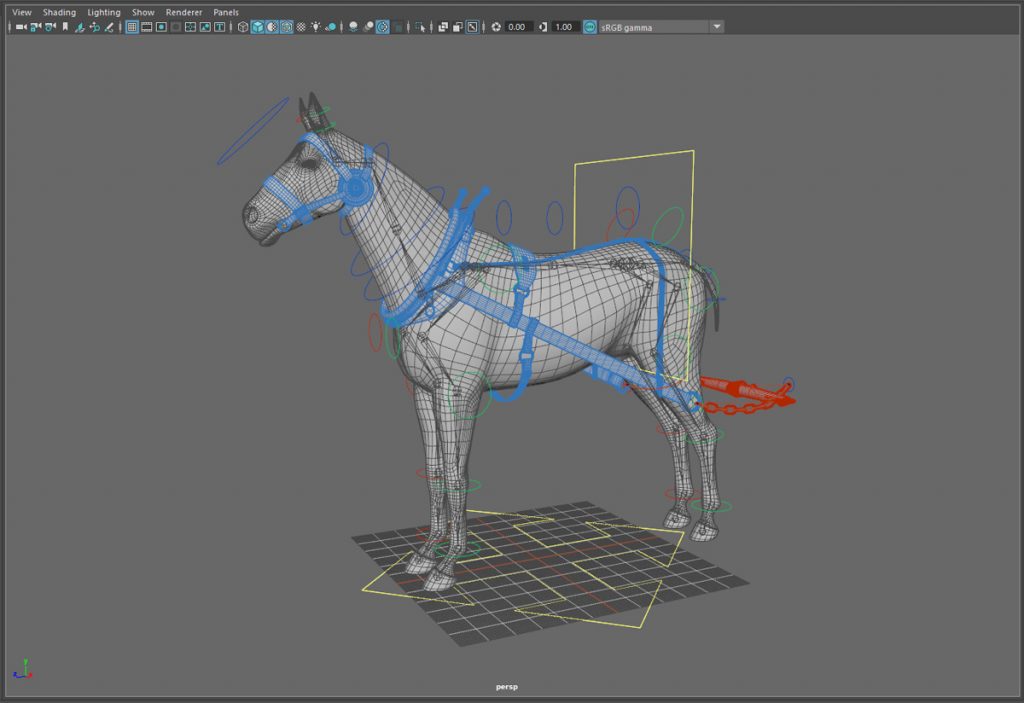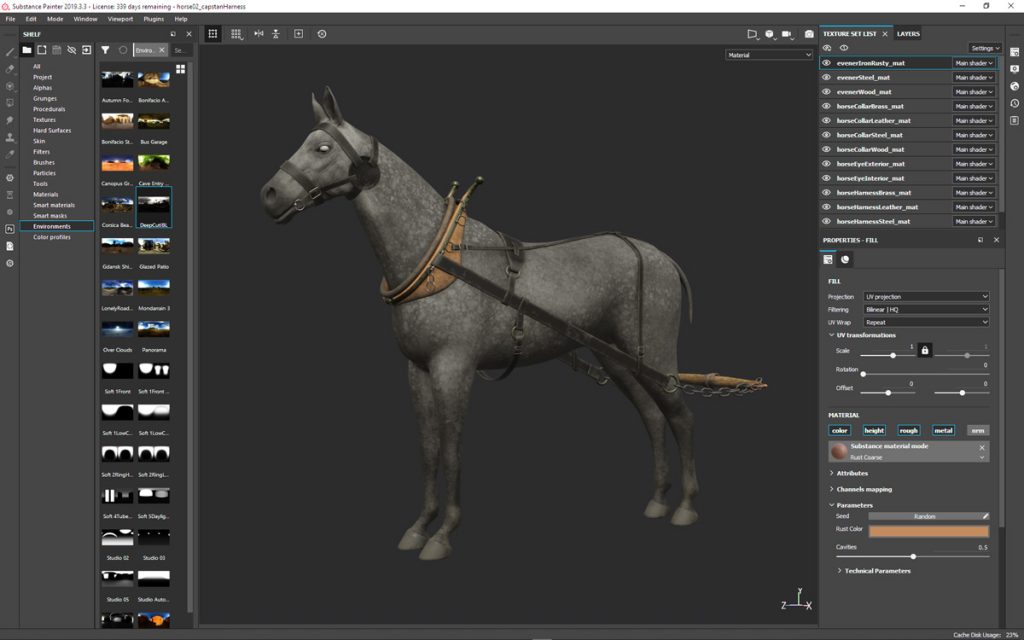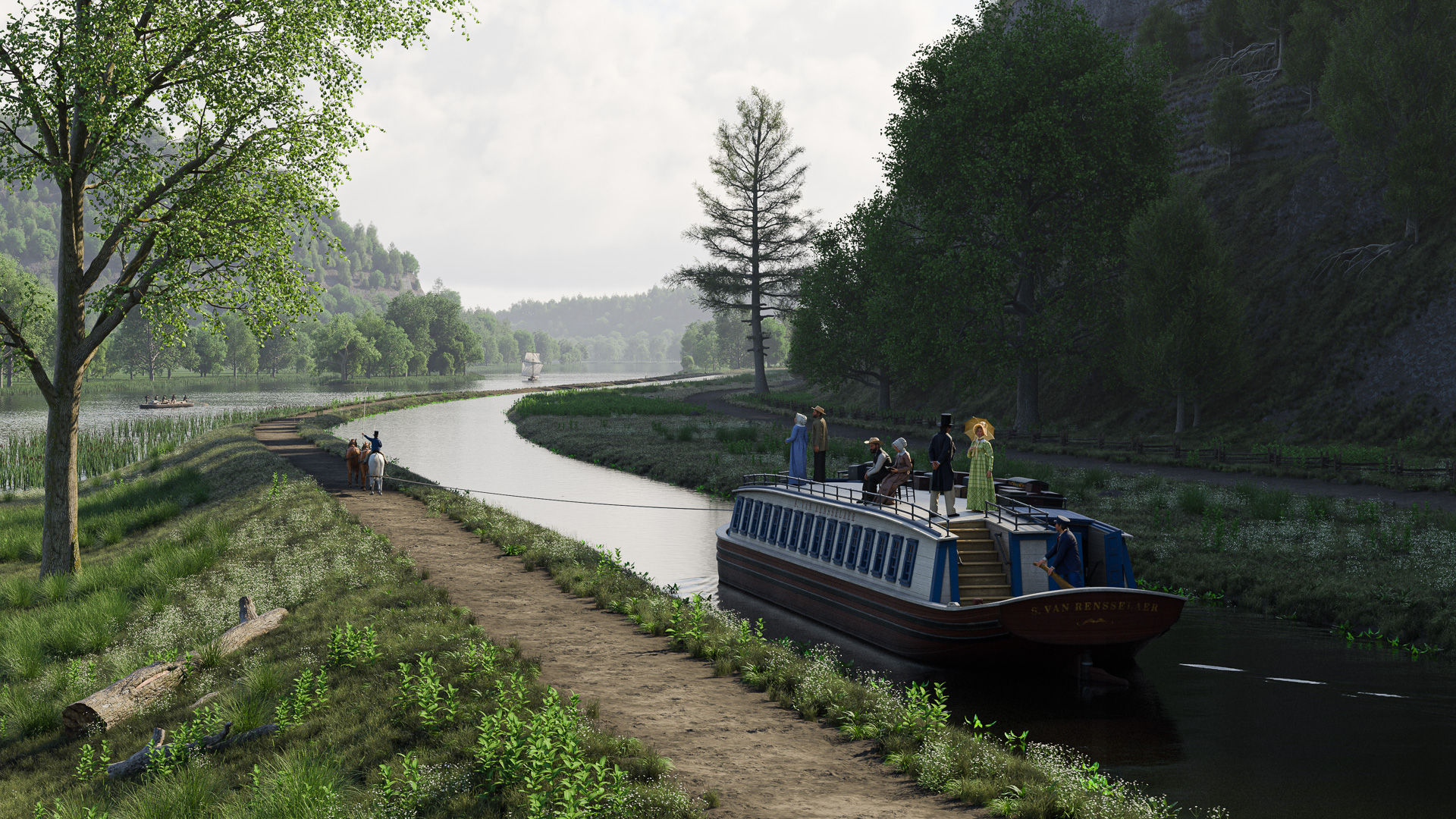
Child labor was a fact of life in early 19th-century America, on the New York frontier as well as in the textile mills that were springing up back east in New England.
Because the Deep Cut scene depicts a turning point in this country’s labor history – the excavation marked the first time industrial methods and organization were applied on such a massive scale – it seemed important to represent the younger workers who would have been present.
I’ve considered including a “jigger boss,” a young boy who doled out whiskey rations to workers several times a day. But I haven’t been able to track down how the whiskey was distributed. (Keg or pail? Not sure.)
In the meantime I decided to include a young driver for the horse harnessed to one of Orange Dibble’s cranes. In a way, the driver can serve as a prototype for the “hoggees” who would soon lead horse and mule teams along the towpath of the completed canal.

The base mesh for a 10-year-old child, completed for an earlier project, was already in hand. So it was just a matter of adapting it — modifying the face and adding some early 19th-century clothing. (Shoes? I’m betting that he wouldn’t have owned any.)

The horse, too, was adapted from an existing mesh. It was made slightly heavier, to represent a local farm draft horse being pressed into service, and the head and face were refined and improved. I’m learning as I go here, so the rig was replaced and improved as well. Finally, a draft harness was added with a singletree that will be hitched to the capstan on the crane.
It turns out that this part of Dibble’s design was nothing new. Horses have powered capstan-driven machinery for centuries. Horse capstans were also known as horse mills or horse gins. They were used to turn rotary mills in Greece as early as 300 B.C.E. Throughout the 19th century, horse whims and, later, horse treadmills powered farm machinery, moved buildings, and even propelled paddle-wheel boats.

The models are shaded in Substance Painter which, along with the rest of the Substance software suite, has become a new part of my workflow. In most respects (but not all) Painter’s tools are much superior to the painting toolset in Mudbox. Everything is nondestructive and simple to modify, and it’s very easy to create custom materials that can be applied to different meshes. It’s a nice upgrade.

Once they are shaded the three models – crane, driver, and horse – are posed and assembled into a single file. That assembly, shown at the top of this post, can then be saved out and imported into the main Terragen scene.

